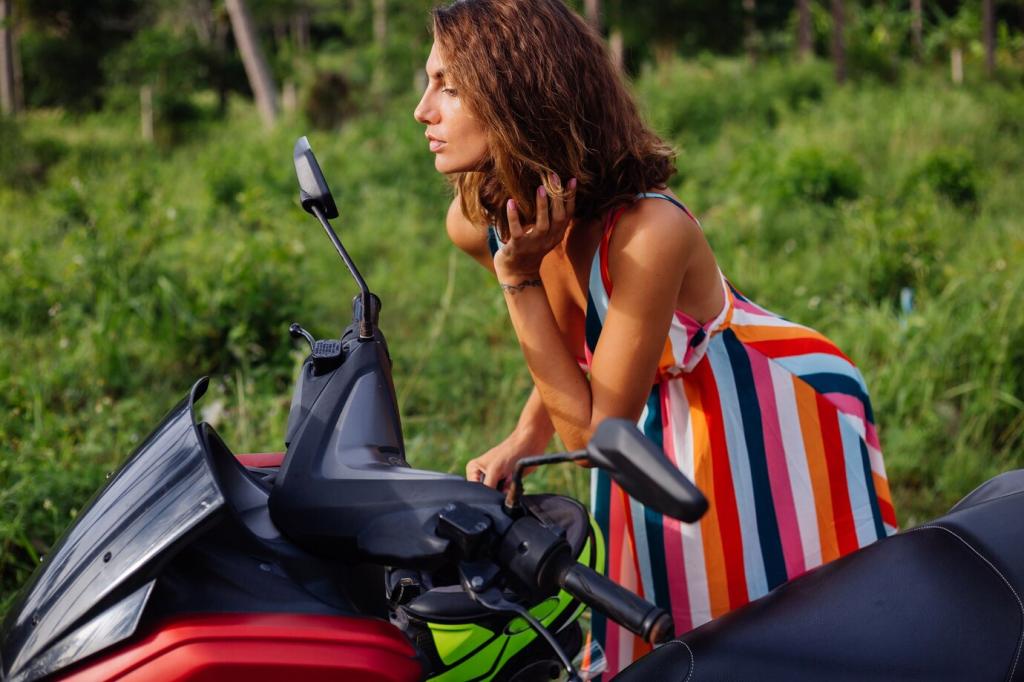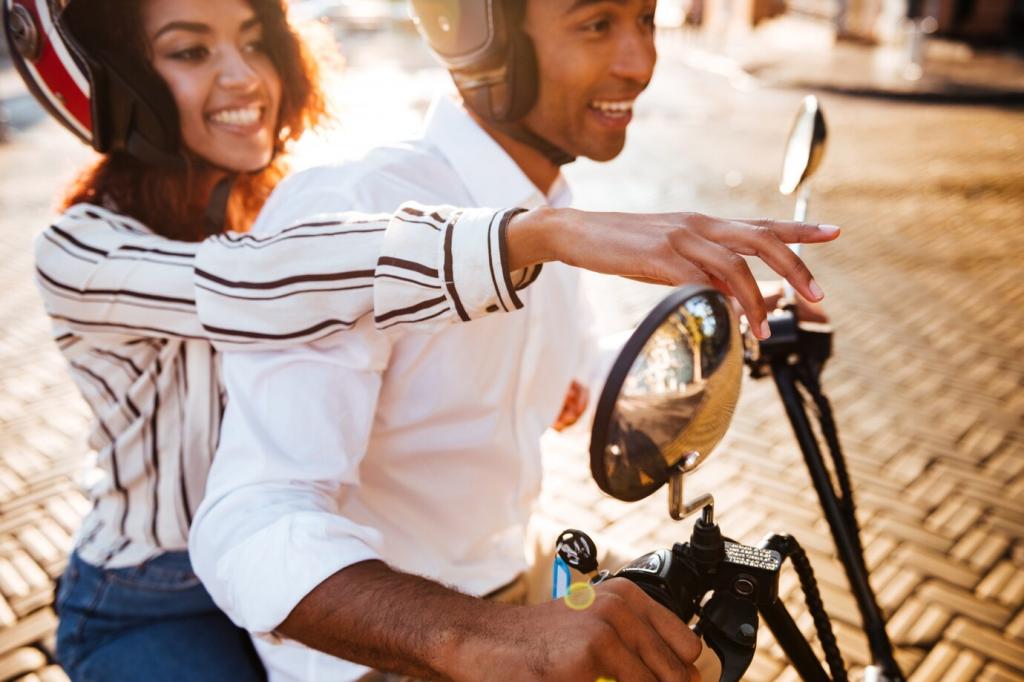Machines Ready: Maintenance, Luggage, and Tools
Follow the MSF T-CLOCS checklist: Tires, Controls, Lights, Oil, Chassis, Stands. Confirm tire pressures for loaded weight, chain slack, and brake pad life. Small checks today prevent big tow trucks tomorrow, guaranteed.
Machines Ready: Maintenance, Luggage, and Tools
Balance weight low and evenly. Use packing cubes and keep rain gear accessible. Separate daily essentials from campsite or hotel items. A tidy load means easier stops, steadier handling, and fewer lost random socks.




